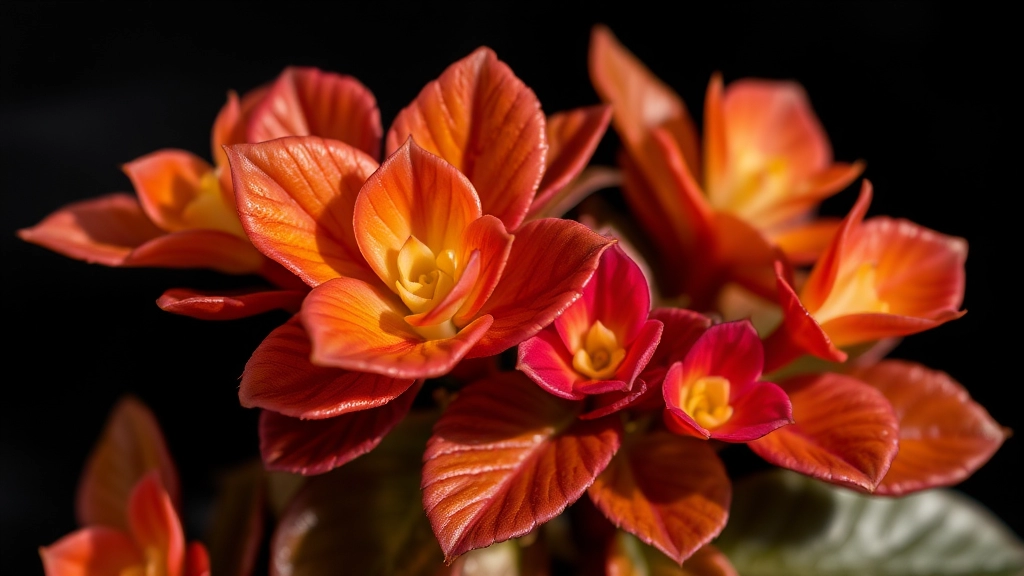Kalanchoe Leaves Turning Brown
If you’ve noticed your Kalanchoe leaves turning brown, you’re not alone. This common issue can be frustrating, but understanding the root causes can help you get your plant back to its vibrant self. In this guide, we’ll dive into the main reasons behind browning leaves and provide practical solutions to keep your Kalanchoe thriving.
Common Causes of Browning Leaves
From improper watering to insufficient light, several factors can lead to your Kalanchoe leaves turning brown. By addressing these issues, you can ensure your plant remains healthy and beautiful. Let’s explore the steps you can take to diagnose and fix the problem.
Common Causes of Kalanchoe Leaves Turning Brown
Have you ever noticed your Kalanchoe leaves turning brown and wondered what might be going wrong? You’re not alone. Many plant enthusiasts face this issue, and understanding the common causes can help you revive your beloved succulent.
Brown leaves on Kalanchoe can stem from several factors, all of which can be addressed with the right care. Here are some of the primary culprits:
- Overwatering: This is one of the most frequent mistakes made by Kalanchoe owners. When the roots sit in waterlogged soil, they can rot, leading to brown leaves.
- Underwatering: Conversely, if you forget to water your Kalanchoe, it can become dehydrated. This often results in crispy, brown edges on the leaves.
- Poor Drainage: Even if you’re watering correctly, inadequate drainage can cause water to accumulate, leading to root rot and browning leaves.
- Fungal Infections: These can develop in overly moist conditions, causing brown spots or patches on the leaves.
- Pests: Infestations can lead to stress on the plant, manifesting as brown leaves.
- Nutrient Deficiencies: Lack of essential nutrients can weaken your Kalanchoe, making it more susceptible to browning.
- Excessive Sunlight: While Kalanchoe loves bright light, too much direct sunlight can scorch the leaves, turning them brown.
- Temperature Stress: Sudden temperature changes or exposure to cold drafts can damage the leaves, resulting in browning.
Understanding these causes is the first step toward a healthier Kalanchoe. For more detailed guidance, check out our best practices for indoor and outdoor care and learn how to address specific issues like leaf spot causes and treatment.
Overwatering and Its Effects
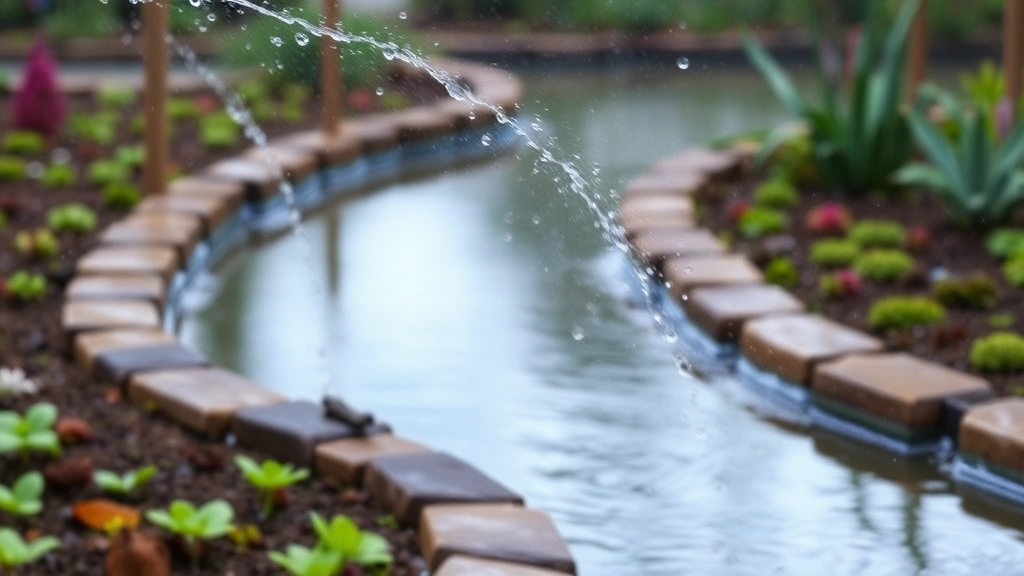
Have you ever noticed your Kalanchoe looking a bit sad, with brown leaves curling at the edges?
Overwatering is often the culprit behind this distress.
When we give our plants too much water, it can lead to some serious problems.
How Does Overwatering Affect Kalanchoe?
- Root Rot: One of the biggest issues is root rot. This happens when the roots sit in soggy soil, leading to decay. If you notice a foul smell when you check the soil, that’s a sure sign.
- Yellowing Leaves: Before they turn brown, leaves often start to yellow. This is your plant’s way of saying, “Hey, I’m drowning here!”
- Wilting: Ironically, overwatered plants can also wilt. This occurs because roots are damaged and can’t take up water properly.
Signs to Look For
- Soil Moisture: Always check the soil before watering. Stick your finger in about an inch deep. If it’s still moist, hold off on that watering can!
- Leaf Texture: Feel the leaves. If they’re soft and mushy, it’s time to reassess your watering routine.
- Pest Attraction: Overwatered plants can attract pests like fungus gnats, which thrive in damp conditions.
What to Do About It
- Adjust Your Watering Schedule: Instead of a strict weekly routine, water only when the top inch of soil is dry.
- Improve Drainage: Use pots with drainage holes and consider adding perlite or sand to your soil mix.
- Repot if Necessary: If root rot is evident, you may need to repot your Kalanchoe with fresh, dry soil.
### Underwatering and Dehydration Symptoms
Have you noticed your Kalanchoe’s leaves starting to shrivel or turn brown? Underwatering could be the culprit. This succulent thrives in a balanced environment but can suffer significantly when deprived of moisture.
#### Recognising Underwatering
When a Kalanchoe is underwatered, it exhibits several telltale signs:
– **Wrinkled Leaves:** The leaves may appear shrivelled or wrinkled, indicating a lack of moisture.
– **Brown Leaf Edges:** The edges of the leaves may turn brown and crispy, a clear sign of dehydration.
– **Drooping:** Stems may start to droop, making the plant look limp and unhealthy.
– **Leaf Drop:** In severe cases, the plant may shed its leaves as a last-ditch effort to conserve water.
#### How to Address Underwatering
If you suspect that your Kalanchoe is underwatered, here’s what you can do:
1. **Water Thoroughly:** Give your plant a deep watering, ensuring that water reaches the roots.
2. **Check Soil Moisture:** Use your finger to check the soil moisture level. If it feels dry an inch below the surface, it’s time to water.
3. **Adjust Watering Schedule:** Establish a consistent watering routine, typically every 2-3 weeks, depending on your environment.
4. **Humidity Considerations:** If your home is particularly dry, consider increasing humidity around the plant.
For more tips on keeping your Kalanchoe healthy, check out our [guide on why Kalanchoe plant leaves turn brown](https://planthq.org/why-kalanchoe-plant-leaves-turn-brown-causes-solutions/). Additionally, if you’re dealing with other issues such as black spots on your Kalanchoe, our [effective solutions for treating black spots](https://planthq.org/how-to-treat-kalanchoe-black-spots-effective-solutions/) might be helpful.
Impact of Poor Drainage on Kalanchoe Health
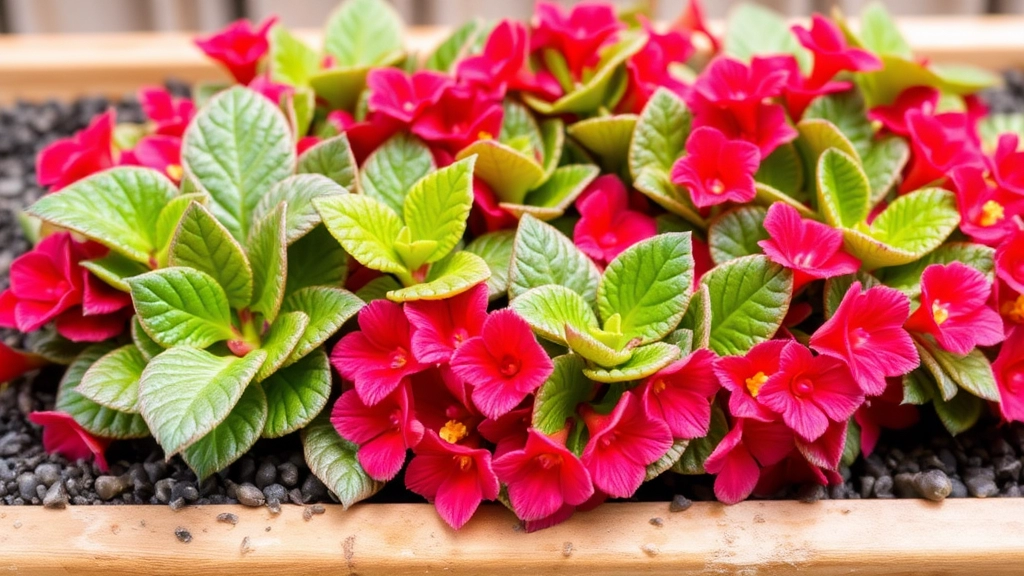
Have you ever noticed your Kalanchoe leaves turning brown, and wondered if drainage could be the culprit?
Poor drainage can severely impact the health of your Kalanchoe, leading to various issues that manifest as browning leaves.
Why Drainage Matters
Kalanchoe plants thrive in well-draining soil. When water accumulates around the roots, it creates a soggy environment that can suffocate them. This excess moisture can lead to:
- Root Rot: A common issue where roots begin to decay due to lack of oxygen.
- Browning Leaves: Leaves may turn brown and mushy as the plant struggles to absorb nutrients.
- Stunted Growth: A Kalanchoe with poor drainage may fail to grow properly, leaving you with a struggling plant.
Signs of Poor Drainage
Identifying drainage issues early can save your plant. Look out for:
- Water pooling on the soil surface after watering.
- A musty smell from the potting mix.
- Yellowing leaves, which can indicate stress from excess moisture.
Solutions to Improve Drainage
To remedy poor drainage, consider these steps:
- Choose the Right Pot: Select pots with drainage holes to allow excess water to escape.
- Use Well-Draining Soil: A mix of cactus soil or potting mix with added perlite can enhance drainage.
- Elevate the Pot: Placing your pot on a surface that allows airflow underneath can help moisture evaporate more quickly.
By addressing drainage issues, you can help restore your Kalanchoe’s health and prevent further browning leaves.
Signs of Fungal Infections
Have you noticed unusual spots or a fuzzy appearance on your Kalanchoe leaves? This could be a sign of a fungal infection, which is a common issue for many plant enthusiasts.
Fungal infections often thrive in conditions where humidity is high and air circulation is poor. If your Kalanchoe is showing signs of distress, it’s essential to identify the symptoms early to prevent further damage.
Common Symptoms of Fungal Infections:
- Discolouration: Leaves may develop brown or black spots, often surrounded by a yellow halo.
- Wilting: Affected leaves may droop or appear limp.
- Mould Growth: You might see a white, fuzzy coating on the leaves or soil.
- Leaf Drop: Infected plants often shed leaves prematurely.
If you spot any of these symptoms, it’s crucial to act quickly. Here’s how you can treat fungal infections:
Treatment Options:
- Remove Affected Leaves: Prune any infected parts to prevent the spread of the fungus.
- Improve Air Circulation: Ensure your plant is in a well-ventilated area.
- Adjust Watering: Allow the soil to dry out between waterings.
- Use Fungicides: Consider applying a suitable fungicide if the infection persists.
By addressing these issues promptly, you can help your Kalanchoe recover and thrive. For more detailed care tips, check out our complete care guide for Kalanchoe Flaming Katy and learn about optimal care for Kalanchoe Blossfeldiana.
Identifying and Treating Pests
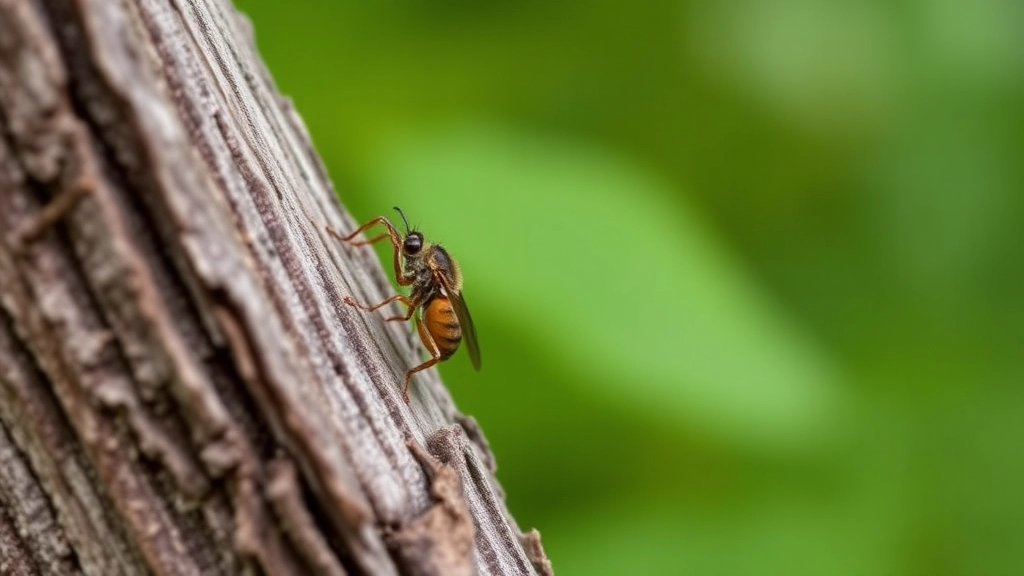
Have you noticed tiny spots on your Kalanchoe leaves or maybe some webbing? Pests could be behind those brown leaves!
Kalanchoes can attract a few common pests, and catching them early is key to keeping your plant healthy. Here’s what to watch out for:
- Mealybugs: These little white, cottony bugs love to hide in the leaf joints. If you see them, it’s time to act fast!
- Spider Mites: Tiny and often hard to spot, they leave fine webbing and cause yellowing leaves.
- Aphids: These green or black bugs suck the sap out of your plant, leading to stunted growth.
How to Treat Pests
- Inspect Regularly: Make it a habit to check your Kalanchoe for any signs of pests. Early detection is key.
- Isolate the Plant: If you find pests, move your Kalanchoe away from other plants to prevent the spread.
- Use Soapy Water: Mix a few drops of mild dish soap with water and spray it on the affected areas. This can suffocate pests.
- Neem Oil: A natural pesticide, neem oil can be effective against many pests. Just dilute it as per the instructions and apply.
- Rinse Off: After treatment, give your plant a gentle rinse to help remove any dead pests or residue.
- Repeat as Needed: Sometimes, it takes a few treatments to completely get rid of the pests.
Keeping an eye out for these critters can save your Kalanchoe from serious damage.
Nutrient Deficiencies and Remedies
Are your Kalanchoe leaves turning brown, and you suspect it might be due to a lack of nutrients? You’re not alone. Many plant enthusiasts face this challenge.
Nutrient deficiencies can lead to various issues, including browning leaves. Common deficiencies that affect Kalanchoe include:
- Nitrogen: Essential for leaf growth; a deficiency can cause older leaves to yellow and eventually brown.
- Phosphorus: Important for root development; lack of it can lead to poor growth and browning.
- Potassium: Vital for overall plant health; deficiency often results in browning leaf edges.
Signs of Nutrient Deficiencies
To effectively address nutrient deficiencies, it’s crucial to identify the signs:
- Yellowing Leaves: Indicates nitrogen deficiency.
- Dark Spots or Edges: Could suggest potassium deficiency.
- Stunted Growth: Often linked to phosphorus deficiency.
Remedies for Nutrient Deficiencies
Once you’ve identified the deficiency, it’s time to take action. Here are some remedies:
- Fertilisers: Use a balanced fertiliser specifically formulated for succulents. Look for one with a higher nitrogen content for nitrogen deficiencies.
- Organic Options: Consider compost or worm castings, which can enrich the soil naturally.
- Soil Testing: If you’re unsure, a soil test can help identify specific nutrient needs.
By addressing nutrient deficiencies promptly, you can restore your Kalanchoe’s health and prevent further browning. For more detailed care tips, check out our guide on maximizing the longevity of Kalanchoe plants and learn how to propagate Kalanchoe Beharensis successfully.
Effects of Excessive Sunlight Exposure

Have you noticed your Kalanchoe leaves starting to brown and crisp up? One common culprit could be excessive sunlight exposure.
While these plants love bright light, too much direct sun can lead to serious damage.
Signs Your Kalanchoe Is Getting Too Much Sun
- Leaf Scorching: Brown, crispy edges on the leaves.
- Faded Colour: Leaves may lose their vibrant green hue.
- Wilting: Despite having enough water, the plant may look droopy.
What Happens When Kalanchoe Gets Too Much Sun?
When your Kalanchoe is basking in too much sunlight, it can’t keep up with the stress. This can lead to:
- Dehydration: Leaves lose moisture faster than they can absorb it.
- Burnt Leaves: Just like our skin, plants can get sunburned.
- Stunted Growth: The plant may struggle to thrive, leading to fewer blooms.
How to Fix Sunburnt Kalanchoe
If you suspect your Kalanchoe is getting too much sun, here’s what you can do:
- Relocate: Move it to a spot with indirect sunlight.
- Provide Shade: Use sheer curtains or a shade cloth.
- Monitor: Keep an eye on the leaves for improvement.
Finding the Right Balance
It’s all about balance, isn’t it? Kalanchoes thrive in bright, indirect light, so aim for around 6 hours of filtered sunlight daily.
Temperature Stress and Leaf Damage
Have you ever noticed your Kalanchoe leaves turning brown and wondered if temperature might be the culprit?
Temperature stress can significantly impact the health of your Kalanchoe.
Understanding Temperature Stress
Kalanchoe plants thrive in a specific temperature range.
When exposed to extreme temperatures, whether too hot or too cold, the leaves can suffer.
Signs of Temperature Stress:
- Brown Leaf Edges: This often indicates that the plant is too hot or too dry.
- Soft, Mushy Leaves: A sign of excessive heat or humidity.
- Wrinkled Leaves: These may appear when the plant is too cold or under-watered.
Ideal Temperature Conditions
To keep your Kalanchoe happy, aim for:
- Daytime: 20°C to 25°C (68°F to 77°F)
- Nighttime: 10°C to 15°C (50°F to 59°F)
Quick Tips to Avoid Temperature Stress:
- Avoid Drafts: Keep your Kalanchoe away from open windows or air conditioning vents.
- Monitor Sunlight: Ensure it’s not in direct sunlight during the hottest part of the day.
- Use a Thermometer: Regularly check the temperature around your plant.
If you notice your Kalanchoe leaves turning brown, it might be helpful to check out the causes and solutions. For more detailed care tips, refer to our expert guide on caring for Kalanchoe succulents.
Proper Care Tips to Prevent Browning
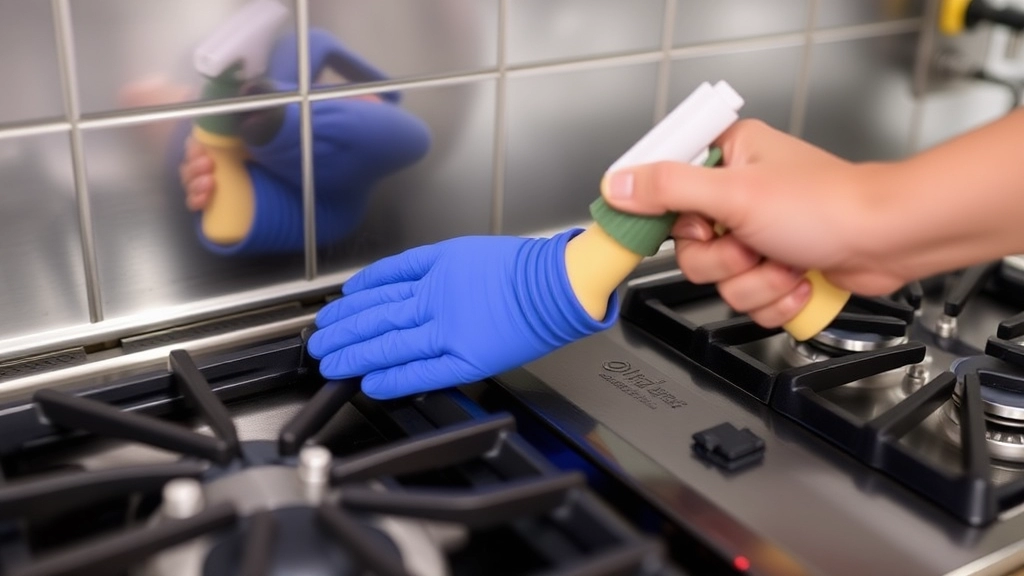
So, you’ve noticed those brown leaves on your Kalanchoe, and now you’re wondering how to turn things around.
Let’s dive into some straightforward care tips that can help keep your plant healthy and vibrant.
1. Water Wisely
- Check the soil: Always poke your finger about an inch into the soil. If it feels dry, it’s time to water.
- Water thoroughly: Ensure the water drains out of the bottom. This prevents root rot.
- Avoid soggy soil: Too much water leads to brown leaves, so keep it balanced.
2. Mind the Light
- Bright, indirect sunlight: Kalanchoes love light, but direct sun can scorch their leaves.
- Rotate your plant: This helps it grow evenly and prevents one side from getting too much sun.
3. Keep an Eye on Temperature
- Ideal range: Kalanchoes thrive in temperatures between 15°C to 25°C.
- Avoid drafts: Keep your plant away from chilly windows or heating vents.
4. Drainage is Key
- Use well-draining pots: Terracotta pots are great as they allow moisture to escape.
- Check drainage holes: Make sure they’re not blocked to prevent water buildup.
5. Feed Your Plant
- Balanced fertiliser: Use a diluted liquid fertiliser every few weeks during the growing season.
- Watch for deficiencies: If you notice yellowing leaves, it might be time to boost those nutrients.
6. Pest Patrol
- Inspect regularly: Look for pests like mealybugs or aphids.
- Natural remedies: A mix of water and dish soap can help eliminate unwanted guests.
7. Fungal Watch
- Air circulation: Ensure your plant isn’t too crowded. Good airflow helps prevent fungal issues.
- Treat promptly: If you spot any signs of fungus, use a fungicide as needed.
When to Repot Your Kalanchoe
Have you noticed your Kalanchoe struggling despite your best care efforts? One reason could be that it needs repotting.
Repotting is essential for maintaining the health and vitality of your Kalanchoe. Here are some signs that indicate it’s time to give your plant a new home:
- Root Bound: If you see roots growing out of the drainage holes or circling tightly around the pot, it’s time to repot.
- Soil Degradation: Over time, potting soil can break down, losing its ability to retain moisture and nutrients. If the soil looks compacted or has a foul smell, consider repotting.
- Growth Stagnation: If your Kalanchoe has stopped growing or is producing fewer flowers, it may be a sign that it needs more space or fresh nutrients.
- Water Retention Issues: If you notice that water is pooling on the surface rather than being absorbed, your plant may need a new pot with fresh soil.
Steps for Repotting
- Choose the Right Pot: Select a pot that is 1-2 inches larger in diameter than the current one. Ensure it has drainage holes.
- Prepare Fresh Soil: A well-draining cactus or succulent mix works best for Kalanchoe.
- Gently Remove the Plant: Carefully take your Kalanchoe out of its pot, trying not to damage the roots.
- Inspect the Roots: Trim any dead or rotting roots before placing the plant in its new pot.
- Fill with Soil: Add the fresh potting mix around the roots, ensuring the plant is at the same depth as before.
- Water Sparingly: After repotting, wait a week before watering to allow the roots to settle.
For more detailed care tips, check out our care tips for a fully grown Kalanchoe plant and our guide on maximizing Kalanchoe plant lifespan.
FAQs on Kalanchoe Leaves Turning Brown
Why are my Kalanchoe leaves turning brown?
Browning leaves on a Kalanchoe can be caused by several factors including overwatering, poor drainage, pest infestations, excessive sunlight, and improper care.
How can overwatering affect my Kalanchoe?
Overwatering can lead to root rot, yellowing leaves, and wilting. It’s crucial to allow the soil to dry out between waterings to prevent these issues.
What are the signs of poor drainage in Kalanchoe plants?
Signs of poor drainage include water pooling on the soil surface, a musty smell from the potting mix, and yellowing leaves. Improving drainage can help prevent these problems.
What pests commonly affect Kalanchoe plants?
Kalanchoe plants can be affected by pests such as mealybugs, spider mites, and aphids. These pests can cause brown spots, webbing, and stunted growth.
How can I treat pests on my Kalanchoe?
Treat pests by inspecting your plant regularly, isolating affected plants, using soapy water or neem oil, and repeating treatments as needed.
Can too much sunlight cause Kalanchoe leaves to turn brown?
Yes, excessive sunlight can cause leaf scorching, faded color, and wilting. It’s important to provide bright, indirect sunlight to prevent these issues.
What are some proper care tips to prevent Kalanchoe leaves from turning brown?
To prevent browning leaves, water wisely, ensure proper drainage, provide the right amount of light, maintain ideal temperatures, feed your plant, check for pests, and monitor for fungal issues.
How often should I water my Kalanchoe?
Water your Kalanchoe only when the top inch of soil is dry. Overwatering can lead to root rot and brown leaves.
What type of soil is best for Kalanchoe plants?
Kalanchoe plants thrive in well-draining soil. A mix of cactus soil or potting mix with added perlite can enhance drainage.
How can I improve the drainage for my Kalanchoe plant?
To improve drainage, use pots with drainage holes, choose well-draining soil, and elevate the pot to allow airflow underneath.
What should I do if my Kalanchoe has root rot?
If root rot is evident, repot your Kalanchoe with fresh, dry soil and adjust your watering schedule to prevent further issues.
How can I protect my Kalanchoe from excessive sunlight?
Protect your Kalanchoe from excessive sunlight by relocating it to a spot with indirect sunlight, providing shade, and monitoring the leaves for improvement.
References
-
Gardening Know How: Overwatering Kalanchoe
-
The Spruce: How to Care for Kalanchoe
-
The Old Farmer’s Almanac: Kalanchoe
